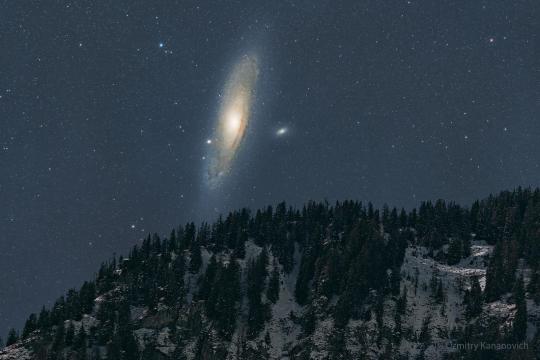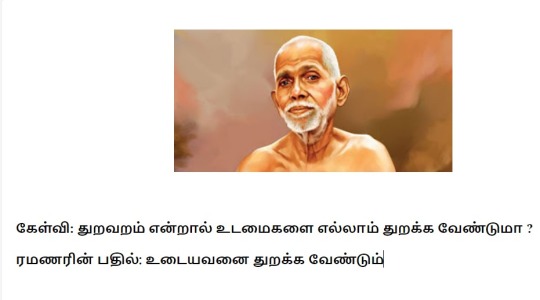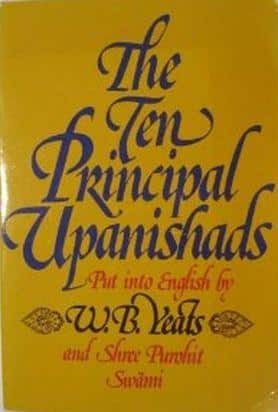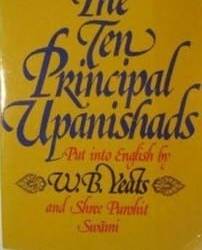#Chhandogya Upanishad
Explore tagged Tumblr posts
Text

Andromeda galaxy in the sky over the Swiss Alps. Credit: Dzmitry Kananovich.
“Like the subtle essence of the mustard seed that brings forth a tree, the subtle essence of one’s heart (the Spirit) has the potential to unfold the entire universe within itself. In Chhandogya Upanishad, Shwetaketu is asked by his Guru, Sage Aruni, to break a tiny seed and see what lies within it. Shwetaketu replies that he sees nothing within the seed. Sage Aruni explains that in that subtle essence, which appears as nothing, a great tree is hidden. In the same way, human beings appear to be nothing and yet this whole universe, the subtle Atman or the Self, the innermost Reality, is hidden within every person.” (p. 233)
~ Mystic Pathways Through The Bible by Swami Jyotirmayananda
#Mystic Pathways Through The Bible#Swami Jyotirmayananda#Chhandogya Upanishad#Sage Aruni#Saints and Sages#Nonduality#Awakening#Enlightenment#The innermost Reality#Self-realization
17 notes
·
View notes
Text
"There is a light that shines beyond the world, beyond everything. Beyond all, beyond the highest heaven... This is the light that shines within your heart."
Chhandogya Upanishad
7 notes
·
View notes
Text
Nyagrodh Tree

From the Chhandogya Upanishad.
“Fetch me from a fruit of the nyagrodh tree,” asked the father, the great sage Uddalak, to his son.
“Here is one, sir,” said Svetaketu.
“Break it.”
“It is broken, sir.”
“What do you see there?”
“These seeds, almost infinitesimal.” “Break one of them.”
“It is broken, sir.”
“What do you see?”
“Nothing, sir. Absolutely nothing.”
The father said, “My son, that subtle essence which you do not perceive there, of that very essence this great nyagrodh tree exists. Believe it, my son, that there is the subtle essence in that all things have existence. That is the truth. That is the self. And that, Svetaketu, that art thou — tatvamasi, Svetaketu.”
The nyagrodh tree, a big tree. The father asks for a fruit; Svetaketu brings it. Fruit is vaikhari — the thing has flowered, fruition has happened. Fruit is the most peripheral thing, absolutely manifested. The father says, “Break it.” Svetaketu breaks it — millions of seeds. The father says, “Choose one seed. Break it also.” He breaks that seed also. Now there is nothing in hand. Now inside the seed there is nothing.
Uddalak says, “Out of this nothingness comes the seed. Out of the seed comes the tree. Out of the tree comes the fruit. But the basis is nothingness, the silence, the space, the formless, the unmanifest, the beyond, the transcendental.”
#good vibes#philosophy#nondualism#nonduality#achintyam#Vibe#vibemantra#mantra#spirituality#life#music#blogger#stories
6 notes
·
View notes
Text

C. R. Pattabhi Raman was a minister at the Center. He was the son of Sir C.P. Ramaswami Aiyar, who was Dewan of Travancore.
My first meeting with Ramana Maharshi was in the early 1930s when I returned from England after my studies. I accompanied the young Maharaja of Travancore to Tiruvannamalai. The Maharshi was the same serene blissful self with a friendly and kindly look on his face. When the Maharaja asked him what the first step was for atma vichara, he said that the very fact that he had come to Tiruvannamalai was the first step for him.
The next important occasion when I went to Tiruvannamalai was a few days before the Maharshi’s bodily demise. I accompanied my father, Dr. C.P. Ramaswami Aiyar, along with a friend. We were taken to the sage, who had been operated upon for a carcinomatous growth on his left arm. Apart from a few beads of perspiration on his forehead, there was nothing on his face to show that he was ill or suffering from pain. He proved beyond doubt that pain or sorrow did not affect a realized soul. A leading civil surgeon from Vellore expressed great surprise that the sage did not even want anesthesia for the operation and yet was able to stand the pain and the shock. Ramana Maharshi spoke a few words to my father and we took leave.
As we were getting ready for dinner, my father said to me that he did not want food and would have some milk. At that very moment, an attendant ran to us with a message from the Maharshi, “The elderly person will say he will only have milk. Let him eat some fruits also.” It was miraculous because the Maharshi was nearly half a furlong away and could not have heard what my father was saying.
The Maharshi was unique in many respects. Like Dattatreya of the Puranas, he did not have a guru as such. One could see on his facial expressions of joy when recitations from the Vedas and Upanishads were taking place in the Ashram. His path of knowledge was not rigid or exclusive.
Sri Ramana did not seek to establish any new cult but showed the direct way to Self-realisation. He taught as a jivanmukta (liberated soul), exemplifying Tat tvam asi (‘Thou art That’ of the Chhandogya Upanishad). Like Suka of the Bhagavatam, he was characterized by samatva (sameness in joy and sorrow and freedom from duality).
He frequently referred to verses from the Yoga Vashista wherein the Sage Vashista advised the young Sri Rama to fulfill his mission as avatara Purusha, all the while abiding in the Self. The ideal of Self-realisation is not visionary but is the very goal of life. Unswerving abidance in the Self, the one eternal Truth, whatever one may be doing, is well described in the Yoga Vashista: Firmly established in the vision that shines forth/ On the renunciation of all desires, and rooted/ In your own Being as a jivanmukta / Act playfully in the world, Oh Raghava.
To have seen the Maharshi in flesh and blood and have heard his word is our great fortune and most treasured memory.
- Face to Face
3 notes
·
View notes
Text
The inner meanings of the four Vedas, explained through the four Upanishads came out by churning, these are reflected in the great four truths (phrases). Great sages Adi Sankara searching an answer to the ever famous question “Who Am I “ will be revealed, if you understand the inner meaning of these Maha Vakyas ! Rig Veda , Aithareya Upanishad ; Prjnanam Brahma (Gyan is Brahma) Yajur Veda , Chhandogya Upanishad; Tatwamasi (It is You) Sama Veda, Bruhadaranyaka Upanishad; Aham Brahmasmi (I am Brahma) Atharva Veda, Mandookya Upanishad; Ayam Atma Brahma (I am Atma, hence I am Brahma) Your effort in search of an answer to the question “Who Am I” will bring you Here, though the route to reach Here is highly complicated, full of thorns. Modifying the earlier way of life practiced till now with major changes, adhering to the strict rules and advices of a Guruswami (3rd person)- Vrita, with dedication, devotion and determination and reaching at the end of the travel towards divine bliss, enlightenment- is the doctrine of Sanatana Dharama- i.e., Tat-Tvam -Asi. Strengthening of body and mind through tough rituals of vritha, you will be prepared to face any adversaries in the trekking route to Sabarimala. Passing through dense forest in the midst of wild animals and difficulties, with ‘Irumudi’ containing pooja materials and the most important “Neithenga” (Ghee filled Coconut) on the head you reached below the holy 18 steps to get a glimpse of the Lord, Swamy Ayyappa, Sree Bhootanatha, the head of Panchabhootas- Prithvi (Earth), Jal (Water), Agni (Fire), Vayu (Air) and Akash (Sky). Breaking a coconut symbolizing destruction of your ego, you climb the 18 holy steps, steps to your final goal of Moksha. Human body comprises 96 tatwa /doctrines / principles in which 18 are very important and are to be compulsorily avoided. The essence and purpose of the strict rituals during the Vrita are to prepare your body and mind to overcome these 18 vices. The first 5 steps represent Panchendriyas - 5 sense organs: eyes, nose, tongue, skin and ears, which always divert a person from his ultimate goal are to be under your control, though difficult in the worldly life, a truth-seeker should be able to acquire that mental power. The next 8 steps represent 8 negative characteristics which prevent man from attaining salvation: kaama (lust), krodha (anger), lobha (greed), moha (temptation), mada (pride), maatsarya (envy), ahankara (ego) and dambham (jealousy) which are to be removed from your mind. Next 3 steps represent Tri-gunas: Tamo guna (lowest of the three; selfish, ignorance), Rajo guna (a mixture of both Tamo and Sattva gunas) and Sattva guna (Rishi like good quality, selflessness, sacrificing for others); One has to come out of all these tri-gunas, which are derived from Panchabhootas.
0 notes
Text
The inner meanings of the four Vedas, explained through the four Upanishads came out by churning, these are reflected in the great four truths (phrases). Great sages Adi Sankara searching an answer to the ever famous question “Who Am I “ will be revealed, if you understand the inner meaning of these Maha Vakyas ! Rig Veda , Aithareya Upanishad ; Prjnanam Brahma (Gyan is Brahma) Yajur Veda , Chhandogya Upanishad; Tatwamasi (It is You) Sama Veda, Bruhadaranyaka Upanishad; Aham Brahmasmi (I am Brahma) Atharva Veda, Mandookya Upanishad; Ayam Atma Brahma (I am Atma, hence I am Brahma) Your effort in search of an answer to the question “Who Am I” will bring you Here, though the route to reach Here is highly complicated, full of thorns. Modifying the earlier way of life practiced till now with major changes, adhering to the strict rules and advices of a Guruswami (3rd person)- Vrita, with dedication, devotion and determination and reaching at the end of the travel towards divine bliss, enlightenment- is the doctrine of Sanatana Dharama- i.e., Tat-Tvam -Asi. Strengthening of body and mind through tough rituals of vritha, you will be prepared to face any adversaries in the trekking route to Sabarimala. Passing through dense forest in the midst of wild animals and difficulties, with ‘Irumudi’ containing pooja materials and the most important “Neithenga” (Ghee filled Coconut) on the head you reached below the holy 18 steps to get a glimpse of the Lord, Swamy Ayyappa, Sree Bhootanatha, the head of Panchabhootas- Prithvi (Earth), Jal (Water), Agni (Fire), Vayu (Air) and Akash (Sky). Breaking a coconut symbolizing destruction of your ego, you climb the 18 holy steps, steps to your final goal of Moksha. Human body comprises 96 tatwa /doctrines / principles in which 18 are very important and are to be compulsorily avoided. The essence and purpose of the strict rituals during the Vrita are to prepare your body and mind to overcome these 18 vices. The first 5 steps represent Panchendriyas - 5 sense organs: eyes, nose, tongue, skin and ears, which always divert a person from his ultimate goal are to be under your control, though difficult in the worldly life, a truth-seeker should be able to acquire that mental power. The next 8 steps represent 8 negative characteristics which prevent man from attaining salvation: kaama (lust), krodha (anger), lobha (greed), moha (temptation), mada (pride), maatsarya (envy), ahankara (ego) and dambham (jealousy) which are to be removed from your mind. Next 3 steps represent Tri-gunas: Tamo guna (lowest of the three; selfish, ignorance), Rajo guna (a mixture of both Tamo and Sattva gunas) and Sattva guna (Rishi like good quality, selflessness, sacrificing for others); One has to come out of all these tri-gunas, which are derived from Panchabhootas.
0 notes
Text
REAPPEARANCE OF THE SUN-GOD IN THE FORM OF JIBANKRISHNA OR DIAMOND WHO IS SEEN IN THE SUN IN DREAMS
The golden person Jibankrishna in the sun or Sun God The sun is the lifeline of this universe and within that sun the supreme person or ‘Parama Brahma’ is seen. Who is He and how is He? Chhandogya Upanishad has mentioned Him as such: That Golden Person who is seen within the sun, has a golden beard and golden hair. He is exceedingly brilliant, all, even to the fingernail tips. [1.6.6] One…
View On WordPress
0 notes
Text
Absolute Aloneness - Osho
Liberation is obtained when there is equality of purity between the purusha and sattva. The Chhandogya Upanishad has a beautiful story. Let us begin with it. Satyakam asked his mother, Jabala, “Mother, I want to live the life of a student of supreme knowledge. What is my family name? Who is my father?” “My son,” replied the mother, “I don’t know. In my youth, when I went about a great deal as a…

View On WordPress
0 notes
Text
The Ten Principal Upanishads


The Ten Principal Upanishads The Ten Principal Upanishads was compiled and translated to English by Shree Purohit Swami and W.B. Yeats. More than 200 Upanishads are known and all texts explaining the Vedas are passed down orally. The Upanishads selected for this introductory book are: The Lord (Eesha-Upanishad) At Whose Command? (Kena-Upanishad) From the Kathak Branch of theWedas (Katha-Upanishad) Questions (Prashna-Upanishad) At the Feet of the Monk (Mundaka-Upanishad At the Feet of Master Mandooka (Mandookya-Upanishad) From the Taittireeya Branch of the Wedas (Taittireeya-Upanishad) At the Feet of Master Aitareya (Aitareya-Upanishad) The Doctrine of the Chhandogyas (Chhandogya-Upanishad) Famous Debates in the Forest (Brihadaranyaka-Upanishad) Download the book here:

The Ten Principal Upanishads
The Ten Principal Upanishads - W.B. Yeats - Full Audiobook
Read the full article
0 notes
Text
Watch "Satyakama Jabala story told in Chhandogya Upanishad" on YouTube
youtube
This story discredits caste system and base it on one's karma ,the mother does not know who is father of the child but the learned saint treats the little child based on his inclination for knowledge and accords him a learned lineage.
0 notes
Text
youtube
5 main things to learn from 5 main Upnishads - Part 2
Hello friends, welcome to the part-2 of the episode number 19 on Hyper Quest. In this part we are discussing about the 10 lessons that our youth can learn from the top 10 Upanishads of Sanatana Hindu Dharma. In this context, in the first part of this episode learned the teachings of the first five: Isha, Kena, Kath, Prasna, and Mundaka Upanishads, now in this part we will learn the teachings from the next five: Mandukya, Taittiriya, Aitareya, Chhandogya and Brihadaranyaka Upanishad.
0 notes
Text

The Upanishads (Set Of 4 Books) by Swami Nikhilananda
The Upanishads: Katha, Isa, Kena, and Mundaka (Volume I)
The Upanishads: Svetasvatara, Prasna, and Mandukya Upanishads (Volume II)
The Upanishads: Aitareya, Brihadaranyaka Upanishads. (Volume III)
The Upanishads: Taittitiya, Chhandogya Upanishads. (Volume IV)

#The Upanishads#The Upanishads (Set Of 4 Books) by Swami Nikhilananda#Enlightenment#Sanatana Dharma#Awakening#Library#Vedanta#Vedic Philosophy#Divine Philosophy
1 note
·
View note
Text
Siddhartha Quote 6
Yea, of this Brahman the name is Satyam – the True; he who knows this enters every day into heaven.
Page 8 paperback
(Holy Upanishads - Chhandogya Upanishad Verse 8.3.4 and 8.3.5)
1 note
·
View note
Text
Chhandogya Upanishad (छान्दोग्योपनिषद्) ebook in hindi pdf
Chhandogya Upanishad (छान्दोग्योपनिषद्) ebook in hindi pdf
Chhandogya Upanishad (छान्दोग्योपनिषद्) ebook in hindi pdf file e-book name- Chhandogya Upanishad (छान्दोग्योपनिषद्) Language- Hindi Book genre- Religion ebook File format- PDF Pages- 970 Size- 18mb Quality- best, no watermark

भूमिका- ॐ पूर्णमदः पूर्णमिदं पूर्णात्पूर्णमदमुच्यते पूर्णस्य पूर्णमादाय पूर्णमेवावशिष्यते. ॐ शान्तिः शान्तिः शान्तिः। ब्रह्मानन्दं परमसुखदं केवलं ज्ञानमूर्ति…
View On WordPress
0 notes
Text

atha yad-idam asmin brahma-pure daharam pundarikam vesma, daharo'smin antarakasah, tasmin yad-antah, tad-anvestavyam, tad-vava vijijnasitavyam
CHHANDOGYA UPANISHAD Ch.8 1 - 1.1

2 notes
·
View notes
Note
Among those rights and wrongs, Bhusita, and within those paths we’ve known, where do we look? In the messiness of arts? Or the reason of the sciences? In the well defined structures of logic, or in the vagueness of love? In the form around, or the flow within?And where lies the truth? In controlling the mind, or in letting it free? In validating the structure, or in disproving it?
It’s strange. Its a hall of mirrors, you know reason, science, logic, love, authority, rebellion, I think they are all slabs of mirrors plastered on the walls of the room we are trapped in. We think we see things in new light everytime we look in a new mirror, but that is simply yet another reflection of our ownself, distorted further by the reflection of everything else we have accumulated over the years. I am beginning to think, there is no truth anywhere else. As long as I look outside, I can only look into the mirrors. I must shut down, and look within. There is this passage in Chhandogya Upanishad that during the early hours of creation, the eyes were created and the sun was created to help them see, and then the heart was created for whom, the moon arose with her dim, lunar light. So, to know ourselves, we must look not in the harsh lights of the day but that faint glimmer, which is only as bright as it is dark.
3 notes
·
View notes